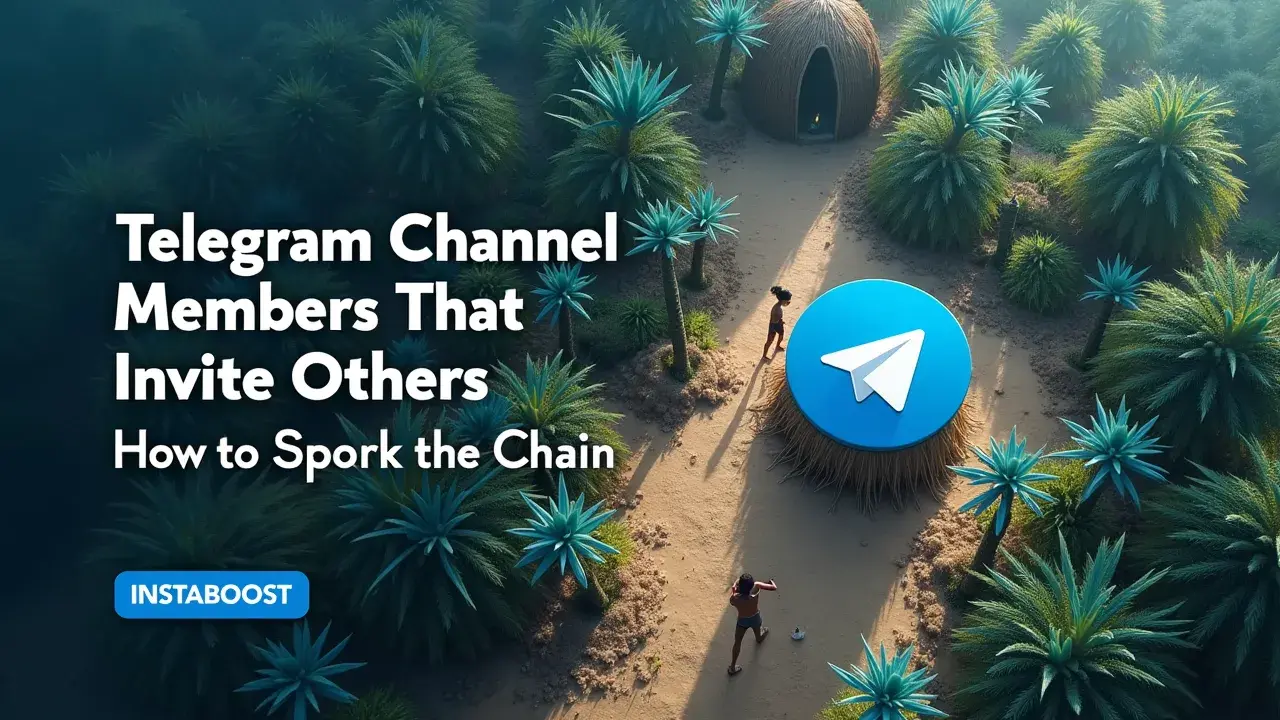Telegram Channel Members Who Invite Others: How To Spark The Chain?
Member-driven growth happens when people feel motivated and confident to share a channel they value. Psychology-backed tactics like social proof, clear identity, and meaningful reciprocity can nudge genuine invites while keeping engagement real. Overpromising or using gimmicks can backfire, but simple cues, timely prompts, and visible community benefits encourage natural sharing. A smart path is to test small incentives and measure invite-driven retention to confirm lasting impact.
The Subtle Geometry of Growth
You can usually tell when a Telegram channel has real life to it, and it’s more than just the number of people joining. The difference shows up when members start inviting friends on their own, without anyone prompting them. It’s not really about big announcements or clever marketing at that point.
A lot of it happens in private – maybe someone is chatting with a friend late at night, or scrolling through and something in the channel feels worth sharing. Every invite means the person felt a bit of trust, or maybe they just thought, “This might click for someone else.” Most channels never really get there; they fill up with people who read but don’t say much, and things stall out.
A lot of it happens in private – maybe someone is chatting with a friend late at night, or scrolling through and something in the channel feels worth sharing. Every invite means the person felt a bit of trust, or maybe they just thought, “This might click for someone else.” Most channels never really get there; they fill up with people who read but don’t say much, and things stall out.
But sometimes, it’s something small – a message that lands at the right time, a joke that feels familiar, a reply that makes you feel noticed – that gets people moving. Suddenly the channel starts growing on its own, in a way you can’t always see directly.
You can try to break down why this happens, or buy growth from a service like INSTABOOST, hoping to speed things up, or even look for tips to optimise your telegram strategy, but the real turning point is quieter than that. Every invitation depends on a private decision – someone thinking for a second before sending a link, deciding it’s worth sharing. Sometimes that moment comes, sometimes it doesn’t.
You can try to break down why this happens, or buy growth from a service like INSTABOOST, hoping to speed things up, or even look for tips to optimise your telegram strategy, but the real turning point is quieter than that. Every invitation depends on a private decision – someone thinking for a second before sending a link, deciding it’s worth sharing. Sometimes that moment comes, sometimes it doesn’t.

Why “Member-Driven Growth” Changes the Game
It’s easy to look at something on the surface and think everything’s going well. With a Telegram channel, for instance, you might feel encouraged when new people are joining and there’s a steady hum of conversation. But just seeing the numbers go up doesn’t always mean people are really involved.
There’s a difference between growth that looks good and growth that actually matters. The channels that really gain momentum usually have a few people who care enough to invite others – not because they’re told to, but because they want to share something that feels valuable. Maybe someone brings in their friends or coworkers because they think those people will genuinely enjoy being there. That gives the channel a different energy, compared to places where most people just read announcements and rarely respond. It’s the sort of thing you can notice if you pay attention: are people talking to each other, are they sharing the channel without being asked, do you ever see a group join all at once?
That’s usually a sign that people feel comfortable and invested, and that matters more than hitting a certain membership number. At the same time, it’s common to come across services where you can add users to your telegram, though that alone doesn’t guarantee the kind of genuine participation that makes a space feel alive. On the other hand, a lot of channels get stuck trying different tactics – using bots, running giveaways, posting non-stop updates – but those things rarely build the kind of group where people want to stick around and bring others with them.
So maybe it’s worth thinking less about how many people are joining day to day, and more about what makes someone feel good about inviting others in, even if it’s only one or two at a time. Sometimes those quiet signals are what tell you the most about how things are really going.
So maybe it’s worth thinking less about how many people are joining day to day, and more about what makes someone feel good about inviting others in, even if it’s only one or two at a time. Sometimes those quiet signals are what tell you the most about how things are really going.
Maybe It’s Not the Rewards, But the Relationships
People always say it’s not really about the tool – it’s about what you do with it. I think that fits when you’re trying to get people to invite others to a Telegram channel. Usually, the advice is all about strategies: run a referral contest, offer some rewards, set up reminders asking people to share the channel. Stuff like that.
But I keep thinking there’s another side to it that those tactics don’t touch. If you care about someone, you probably won’t bring them into a space that feels forced or where it seems like everyone’s just there for the incentives. It doesn’t matter how good the rewards are. I think the real difference comes from the small things that make people feel at home – a running joke in the chat, someone noticing when you’ve been quiet, people sharing stories that aren’t polished or performative. At some point, I remember stumbling onto a discussion about ways people try to purchase telegram views, and it struck me that no amount of numbers could replace that feeling of belonging.
When a channel has that kind of atmosphere, inviting someone feels easy, even obvious. Owners who notice those details – who pay attention to how people actually interact day to day – seem to end up with the kinds of channels where growth just sort of happens in the background, without anyone really pushing for it. The channels that grow the most aren’t the ones that feel like a campaign; they’re the ones that feel like a place you’d want to bring a friend, because it feels good to be there. It gets me thinking about where I’d actually want to send an invite, and what makes a place feel like it’s worth sharing.
Why “Chain-Reaction Growth” Isn’t as Simple as It Sounds
Sometimes I catch myself thinking I’d have more luck explaining my brand to my cat than getting people to share my Telegram channel. I see a lot of creators focusing on member counts, trying every so-called viral tactic, hoping that some new incentive will suddenly make things take off. But when you’re actually in it, trying to grow a channel by asking members to invite their friends, it never goes as smoothly as all those tips and guides make it sound.
People don’t share things just because you tell them to, or because there’s a quick perk in it for them. There’s always this little mental check: Will sending this to someone make me look pushy? Will my friends care, or will they just ignore it? That’s why, despite all the advice about member-driven growth, it rarely plays out the way you expect. I’ve seen channels with thousands of members where almost nobody says anything, and then there are smaller ones where the energy is different – maybe people have inside jokes, or the conversations feel more open and real. Most guides on getting active members seem to focus on tricks, but in practice, the thing that actually gets people to invite others is when the channel feels like a place they’re proud to be part of.
With INSTABOOST, I keep running into the same realization: you can’t automate that sense of belonging, no matter how many invite tools you try. Even when I see things like bulk telegram reactions being offered, it just reminds me that some things in a community can’t be faked.
With INSTABOOST, I keep running into the same realization: you can’t automate that sense of belonging, no matter how many invite tools you try. Even when I see things like bulk telegram reactions being offered, it just reminds me that some things in a community can’t be faked.















